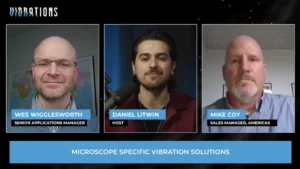Virgin Galactic Test Flight Reaches Space From New Mexico
(Bloomberg) —
Virgin Galactic Holdings Inc. flew a test flight to space for the first time in more than two years, a critical step in its path toward commercial service following a series of issues that have beset the company.
The VSS Unity test flight from New Mexico on Saturday helps put the company back on its stated schedule of flying company founder Richard Branson to suborbital space as early as this summer, and resuming ticket sales.
Branson and Chief Executive Officer Michael Colglazier observed the flight from Virgin Galactic’s operations center at Spaceport America, near Truth or Consequences, New Mexico.
“It was a very, very clean and elegant flight,” Colglazier said Saturday in a telephone interview, calling the test a success that met each objective, including the first trip with a new, more precise flight control system to improve the spacecraft’s handling.
The unexpected part of the event, he said, was when an ecstatic Branson sprayed him with champagne following the flight. “That was unusual and not expected,” Colglazier said.
Piloted by CJ Sturckow and Dave Mackay, the VSS Unity flight was the company’s first to space from New Mexico, which became the third U.S. state from which people have flown to space after Florida and California. A 1982 Space Shuttle mission landed at White Sands Missile Range in New Mexico.
VSS Unity was traveling at a speed of Mach 3 after being released from the mothership, VMS Eve, and reached space at an altitude of 55.45 miles (89.2 kilometers), before landing at Spaceport America, according to a statement.
The flight was the company’s first rocket burn since February 2019, when Beth Moses, a Virgin engineer and astronaut instructor, joined a test flight from Mojave, California. The trip paves the way for Virgin’s next test flight, which is expected to carry additional employees as the company prepares for its commercial service.
The company isn’t ready to say when it will be ready for the next test flight with four employees. “You can imagine I’m getting a lot of people pinging me with ‘I’d like to be on,’” Colglazier said.
After the 2019 flight engineers discovered hull damage on the spacecraft from air pressure that had built up after ventilating holes were accidentally covered, according to “Test Gods,” a book published this month by New Yorker writer Nicholas Schmidle, who was given access to observe the company for several years.
Amid delays caused by the pandemic, with many employees working from home, Virgin Galactic’s testing program suffered another setback in December when VSS Unity dropped from its carrier aircraft but the rocket motor failed to ignite. The craft glided back to Spaceport America and landed without incident.
A second flight attempt in February was scuttled by electrical interference detected in the spacecraft’s avionics system. The company spent about two months repairing the interference issues, which engineers traced to the installation of a more powerful flight computer last year.
Earlier this month, Virgin Galactic warned investors that it was reviewing “fatigue and stress” issues in its four-engine carrier aircraft, VMS Eve. The airplane was cleared to fly after “a detailed inspection and thorough analysis,” the company said Thursday.
—









